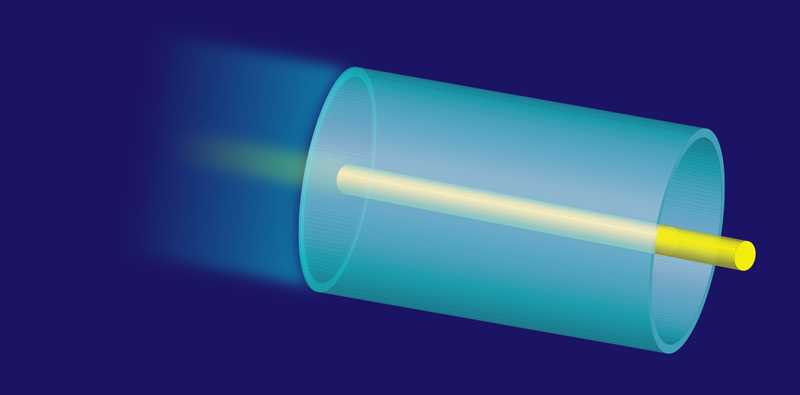American Physical Society August 14, 2020
Accelerating charged particles using intense laser pulses instead of radio-frequency fields could dramatically reduce the sizes of high-energy particle accelerators. Researchers at the University of Maryland prepared a longer, more controllable, and less leaky waveguide using two consecutive laser pulses that approximate Bessel beams, which are waveforms that do not spread out as they propagate. The first pulse creates the core of the waveguide. The second pulse creates the cladding. With this independent preparation of core and cladding, the team could form a waveguide with finely tunable parameters, such as the diameter and the density contrast between core and cladding. They demonstrated guiding of intense laser pulses over hundreds of Rayleigh lengths. This scheme could make laser-based accelerators more practical, efficient, and powerful…read more. TECHNICAL ARTICLE

Credit: APS/Alan Stonebraker